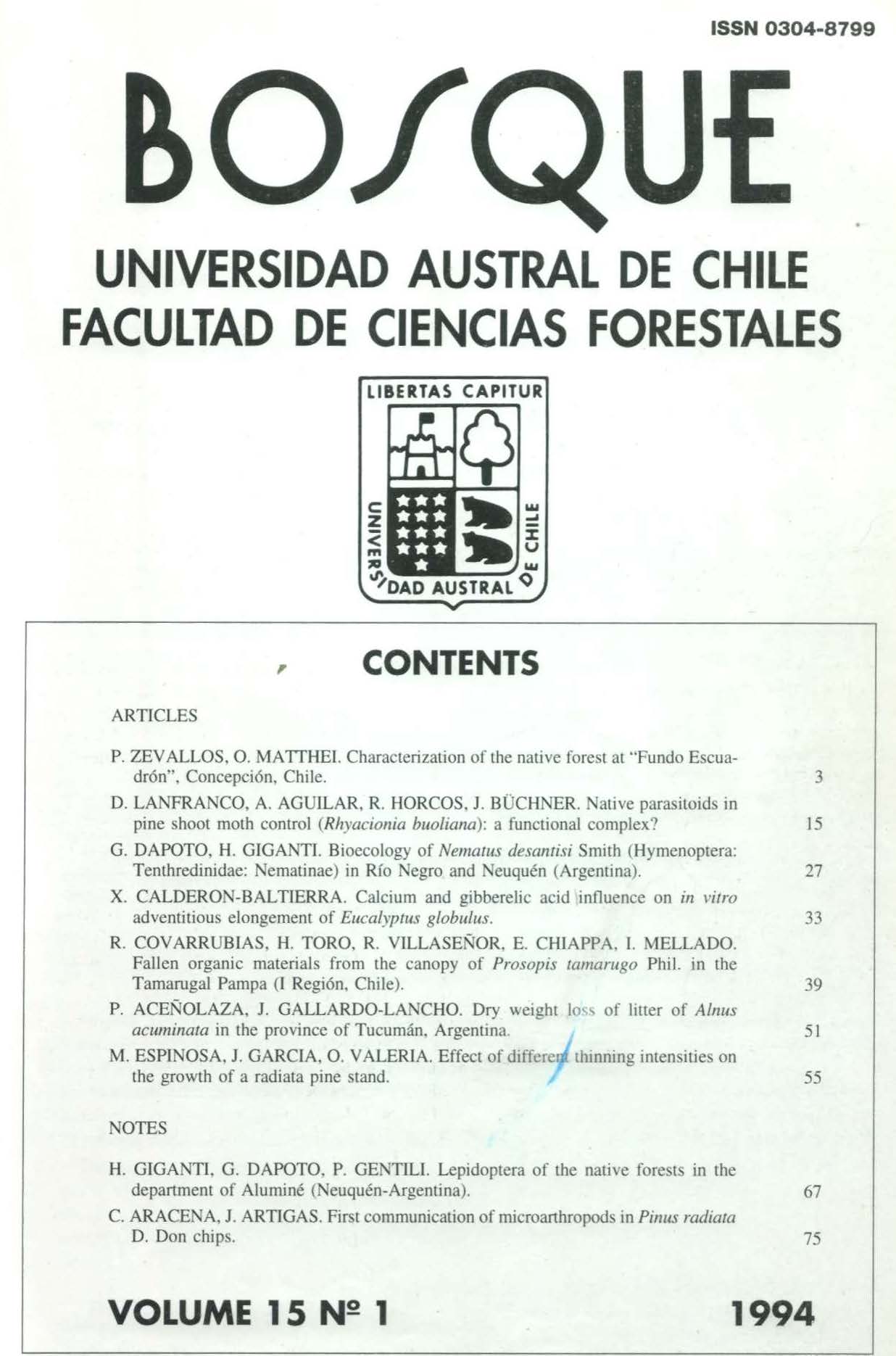Bioecology of Nematus desantisi Smith (Hymenoptera: Tenthredinidae: Nematinae) in Río Negro and Neuquén (Argentina)
Main Article Content
Abstract
N. desantisi was found, for the first time, as a new species in the lower valley of Río Chubut, Argentina, in 1980/ 81. It showed an extensive and fast spread in this country (3.000 km in 9-10 years). It was detected in Santiago de Chile in 1983/84. It causes intensive defoliations and loss of trees in Salix sp., and it also damages Populus sp., very important trees in Patagonia. Consequently it was decided to study its bioecology in Río Negro and Neuquén. The results indicate that, at present, it is found in the whole basin of the río Negro. The following aspects are described: date of beginning the oviposition, date of starting in diapause, oviposition and morphology of egg, larvae, pupae and imago. It has 4-5 generations/year, and these are overlapped. Three new parasitoids were found which were classified by De Santis: Pteromalidae sp., Isdromas gigantii sp. nov. (Ichneumonidae) and Cirrospilus gracielae sp. nov. (Eulophidae). The following species are mentioned as new hosts: Salix alba, S. elegantissima, S. matsudana and Populus alba.

